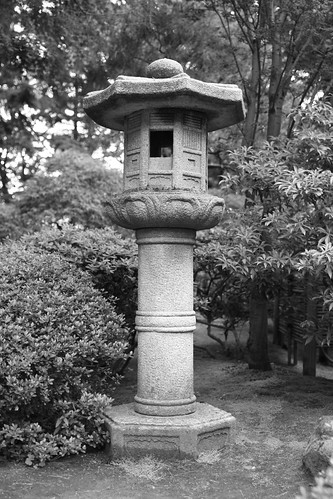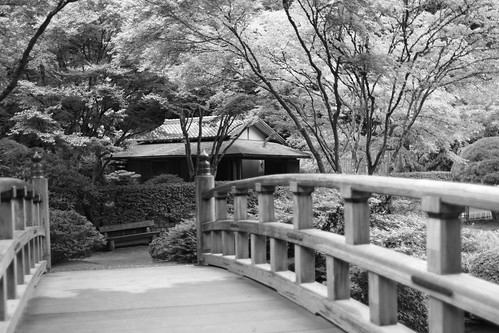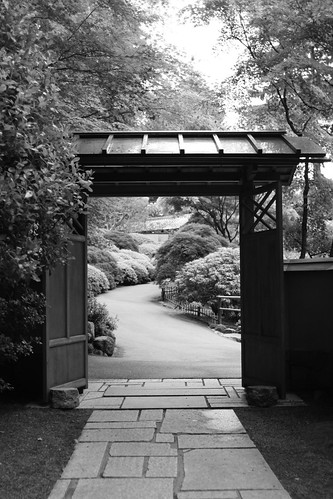Perhaps not unlike many modern photographers, I have precious little experience with black and white, or as it seems to be more recently called, monochrome, photography. A child of the Technicolor generation, I have, with the exception of some early television programs and the classic films that I very much enjoy, always experienced the world in vivid, vibrant color. However with the weather promising clouds and rain during a planned trip to one of my favorite photographic sites, the Portland Japanese Garden, the idea came to me to switch the Canon 40D into monochrome mode and try my hand at a new style.
Black and white photography presents many challenges but at the same time provides equally abundant opportunities. With matters of color removed from the composition of the photo, shadow and white balance become of paramount importance.
Contrast rather than simple visual interest rises in importance. Focus, both in the foreground as well as the background, must be assessed differently than in a color composition. The popular background blur is far less useful – indeed, blurring the foreground can sometimes be far more successful.
I found that shooting in black and white forced me to more carefully consider the composition of my photos. “Lucky shots” seemed to be impossible; only carefully considered and thought-out scenes produced acceptable results. Because of this I highly recommend black and white experimentation to all photographers who have not previously done so. I plan on making it a regular part of my photography from now on if for nothing else than to help me to become mindful of my technique.




June 23, 2009 @ 10:33
Personally, I prefer black & white (greyscale) photography. If they weren’t so expensive, I’d have every Ansel Adams photograph available on my walls! It takes special talent to capture what he captured in his photos of nature! Yes, composition + light = magnificence!
June 23, 2009 @ 16:03
Beautifully done!